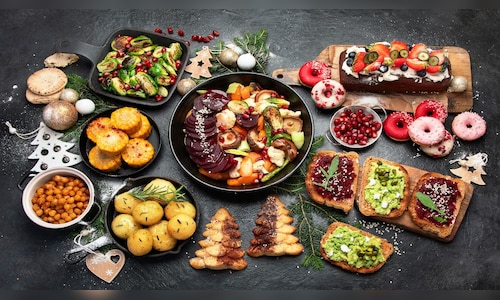What is GST on restaurants?
The government imposes GST on restaurants based on their type and structure. Currently, there are three primary slabs in effect:
5%: This rate applies to restaurants that do not claim input tax credit (ITC), encompassing the majority of standalone restaurants, no matter if it’s dine-in, takeaway, or delivery.
12%: This rate is for restaurants within hotels that charge room tariffs exceeding ₹7,500 and opt to claim ITC.
18%: This applies to outdoor catering services eligible for ITC benefits.
GST has replaced the previous tax structure involving service tax and VAT, creating a streamlined system.
What the law says vs what happens in practice
In theory, GST rates should uniformly apply across dine-in, takeaway, and delivery. However, in practice, the service method can influence how GST is collected and who is responsible—particularly concerning food aggregators.
ALSO READ | How credit card deals and restaurant offers are transforming the dining experience
“We adhere to the applicable GST framework—5% for dine-in, takeaway, and delivery orders without input tax credit. Our transparent billing process fosters trust among customers across all formats,” stated Paras Teotia, Co-Founder of Curry Crown, a restaurant chain operating under the standard 5% slab.
Restaurants registered under the composition scheme, available for those with annual turnover up to ₹1.5 crore, pay a lower fixed tax of 5% but cannot charge GST on the bill or claim ITC.
Impact on pricing and strategy
For many restaurants, GST is not merely a regulatory requirement. It directly influences menu pricing and the final amount customers pay.
“While GST does affect our pricing strategy, we strive to keep our menu fair and accessible, absorbing some of the tax impact to ensure value for our guests,” Teotia added.
Others emphasize the operational challenges associated with tax exclusions.
For instance, the inability to claim ITC means restaurants shoulder the total GST burden on costs like ingredients, rent, and utilities.
“Reinstating input tax credit could empower restaurants to invest more in quality ingredients, infrastructure, and enhanced services,” Teotia noted.
Aggregators and online orders
For food ordered through platforms like Zomato or Swiggy, the responsibility for GST collection shifts.
“When using aggregator platforms, GST is collected and managed directly by the platform. Customers will still see the GST breakdown, but it is the platform that submits the tax to the government,” explained Yogesh Sharma, Founder & CEO of Karigari, a premium dining brand.
Transparency is key
Restaurants are prioritizing clear and compliant billing methods. For example, Karigari emphasizes transparent GST practices as part of its customer experience approach.
“We believe that a great dining experience includes not only exceptional food but also open and clear communication. Our billing practices embody both compliance and our dedication to building trust,” said Sharma.
He highlighted that GST influences everything—from dish pricing to customer perceptions of value.
“Customers are mindful of final billing amounts. Transparent and inclusive pricing maintains trust and prevents surprises during billing,” Sharma added.
ALSO READ | How dining out is now also about loyalty perks, experiences and storytelling

















